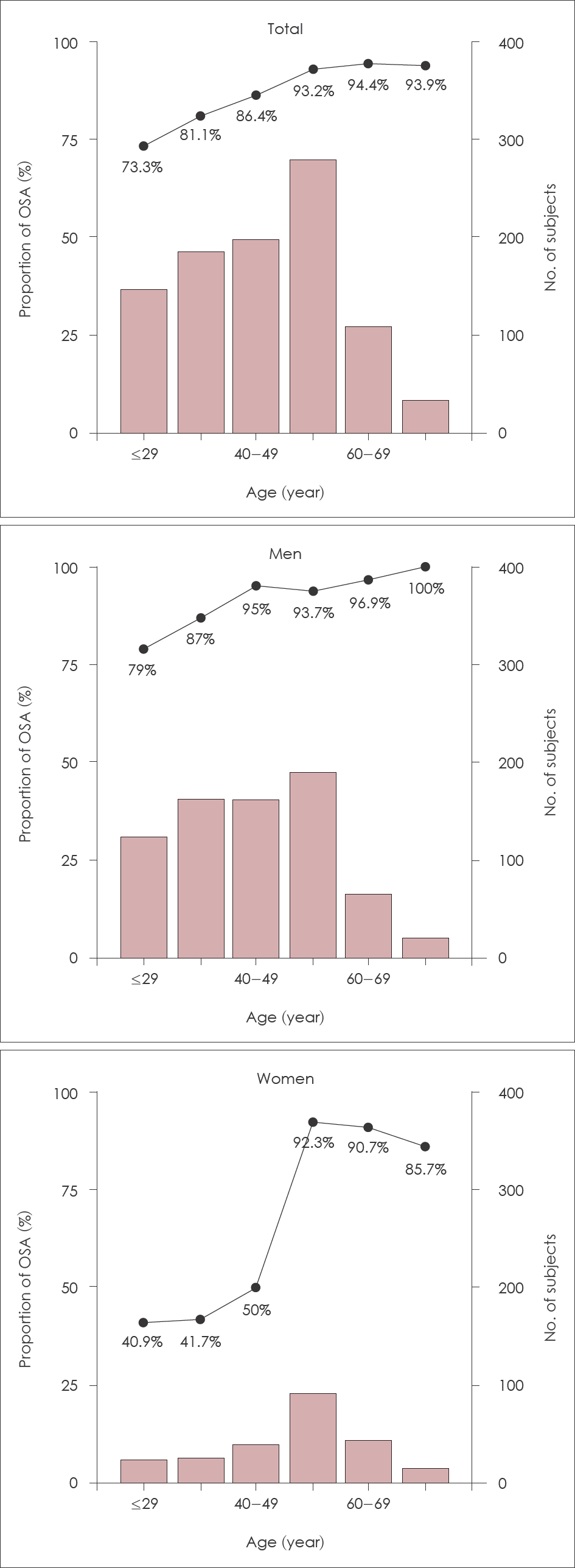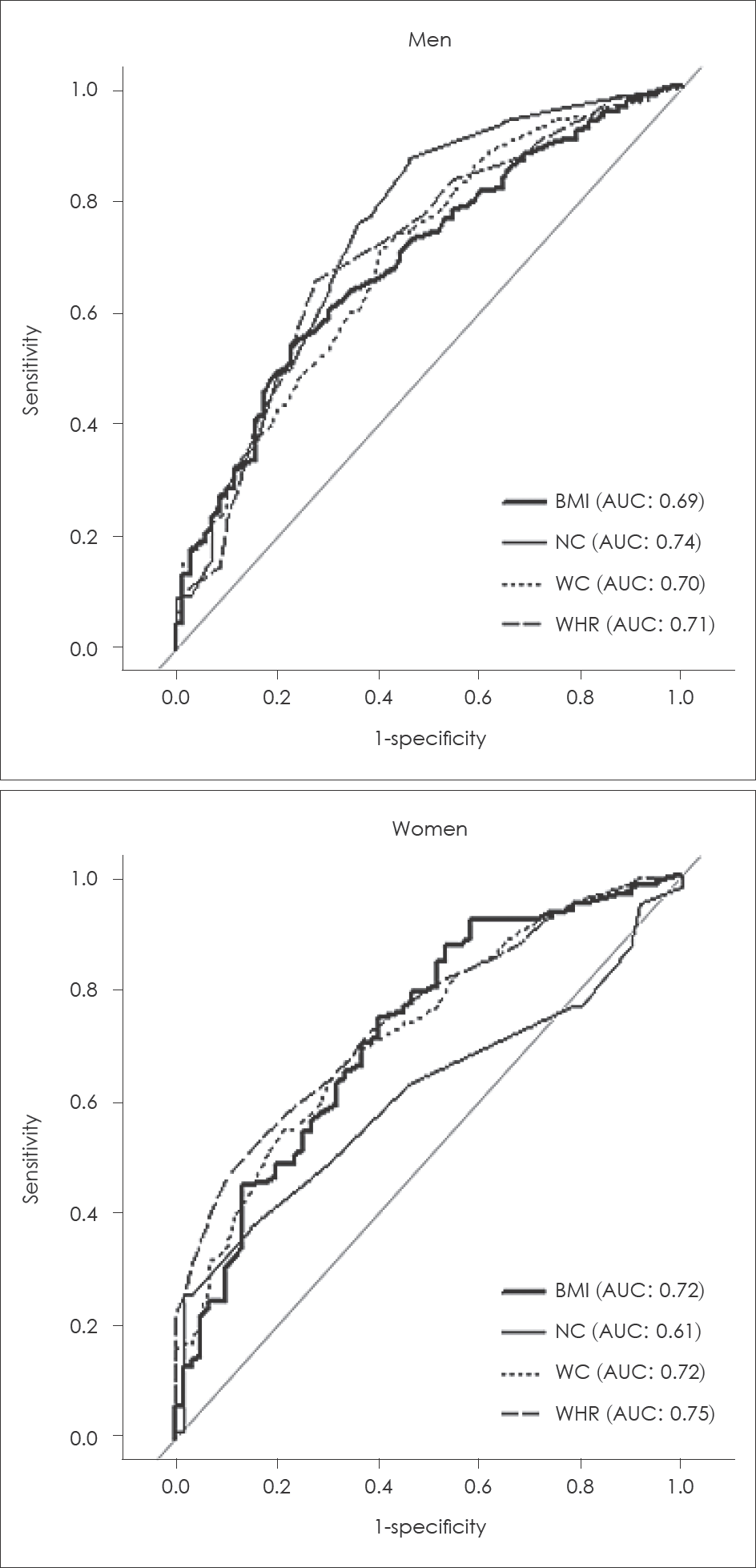1). Epstein LJ., Kristo D., Strollo PJ Jr., Friedman N., Malhotra A., Patil SP, et al. Clinical guideline for the evaluation, management and longterm care of obstructive sleep apnea in adults. J Clin Sleep Med. 2009. 5(3):263–76.
2). Kapur VK., Auckley DH., Chowdhuri S., Kuhlmann DC., Mehra R5., Ramar K, et al. Clinical Practice Guideline for Diagnostic Testing for Adult Obstructive Sleep Apnea: An American Academy of Sleep Medicine Clinical Practice Guideline. J Clin Sleep Med. 2017. 13(3):479–504.

3). Namyslowski G., Scierski W., Mrowka-Kata K., Kawecka I., Kawecki D., Czecior E. Sleep study in patients with overweight and obesity. J Physiol Pharmacol. 2005. 56(Suppl 6):59–65.
4). Ip MS., Lam KS., Ho C., Tsang KW., Lam W. Serum leptin and vascular risk factors in obstructive sleep apnea. Chest. 2000. 118:580–6.

5). Yucel A., Unlu M., Haktanir A., Acar M., Fidan F. Evaluation of the upper airway cross-sectional area changes in different degrees of severity of obstructive sleep apnea syndrome: cephalometric and dynamic CT study. Am J Neuroradiol. 2005. 26:2624–9.
6). Julià-Serdà G., Pérez-Peñate G., Saavedra-Santana P., Ponce-González M., Valencia-Gallardo JM., Rodríguez-Delgado R, et al. Usefulness of cephalometry in sparing polysomnography of patients with suspected obstructive sleep apnea. Sleep Breath. 2006. 10:181–7.

7). Zhao ZH., Sullivan C., Liu ZH., Luo Q., Xiong CM., Ni XH, et al. Prevalence and clinical characteristics of sleep apnea in Chinese patients with heart failure. Int J Cardiol. 2007. 118:122–3.

8). Sharma SK., Kumpawat S., Goel A., Banga A., Ramakrishnan L., Chaturvedi P. Obesity, and not obstructive sleep apnea, is responsible for metabolic abnormalities in a cohort with sleep-disordered breathing. Sleep Med. 2007. 8:12–7.

9). Liu KH., Chu WC., To KW., Ko FW., Tong MW., Chan JW, et al. Sonographic measurement of lateral parapharyngeal wall thickness in patients with obstructive sleep apnea. Sleep. 2007. 30:1503–8.

10). Martinez-Rivera C., Abad J., Fiz JA., Rios J., Morera J. Usefulness of truncal obesity indices as predictive factors for obstructive sleep apnea syndrome. Obesity. 2008. 16:113–8.

11). Nakagawa Y., Kishida K., Kihara S., Sonoda M., Hirata A., Yasui A, et al. Nocturnal reduction in circulating adiponectin concentrations related to hypoxic stress in severe obstructive sleep apnea-hypopnea syndrome. Am J Physiol Endocrinol Metab. 2008. 294:E778–84.

12). Jelic S., Lederer DJ., Adams T., Padeletti M., Colombo PC., Factor PH, et al. Vascular inflammation in obesity and sleep apnea. Circulation. 2010. 121:1014–21.

13). Angelico F., del Ben M., Augelletti T., de Vita R., Roma R., Violi F, et al. Obstructive sleep apnoea syndrome and the metabolic syndrome in an internal medicine setting. Eur J Intern Med. 2010. 21:191–5.

14). Ugur KS., Ark N., Kurtaran H., Kizilbulut G., Cakir B., Ozol D, et al. Subcutaneous fat tissue thickness of the anterior neck and umbilicus in patients with obstructive sleep apnea. Otolaryngol Head Neck Surg. 2011. 145:505–10.

15). Kawaguchi Y., Fukumoto S., Inaba M., Koyama H., Shoji T., Shoji S, et al. Different impacts of neck circumference and visceral obesity on the severity of obstructive sleep apnea syndrome. Obesity. 2011. 19:276–82.

16). Soylu AC., Levent E., Sariman N., Yurtlu S., Alparslan S., Saygi A. Obstructive sleep apnea syndrome and anthropometric obesity indexes. Sleep Breath. 2012. 16:1151–8.

17). Lubrano C., Saponara M., Barbaro G., Specchia P., Addessi E., Costantini D, et al. Relationships between body fat distribution, epicardial fat and obstructive sleep apnea in obese patients with and without metabolic syndrome. PLoS One. 2012. 7:e47059.

18). Lin QC., Zhang XB., Chen GP., Huang DY., Din HB., Tang AZ. Obstructive sleep apnea syndrome is associated with some components of metabolic syndrome in nonobese adults. Sleep Breath. 2012. 16:571–8.

19). Apaydin M., Ayik SO., Akhan G., Peker S., Uluc E. Carotid intima-media thickness increase in patients with habitual simple snoring and obstructive sleep apnea syndrome is associated with metabolic syndrome. J Clin Ultrasound. 2013. 41:290–6.

20). Liu KH., Chu WC., To KW., Ko FW., Ng SS., Ngai JC, et al. Mesenteric fat thickness is associated with increased risk of obstructive sleep apnoea. Respirology. 2014. 19:92–7.

21). Banhiran W., Junlapan A., Assanasen P., Chongkolwatana C. Physical predictors for moderate to severe obstructive sleep apnea in snoring patients. Sleep Breath. 2014. 18:151–8.

22). Lim YH., Choi J., Kim KR., Shin J., Hwang KG., Ryu S, et al. Sex-specific characteristics of anthropometry in patients with obstructive sleep apnea: Neck circumference and waist-hip ratio. Ann Otol Rhinol Laryngol. 2014. 25:517–23.
23). Lee SK., Kim SW., Lee YC., Kim SH., Eun YG., Cho JS. Difference of Polysomnographic, Anthropometric, Physical and Radiologic Findings in an Obstructive Sleep Apnea Syndrome Patient with Excessive Daytime Sleepiness. J Rhinol. 2008. 15(1):55–61.
24). Cho JH., Choi JH., Suh JD., Ryu S., Cho SH. Comparison of anthropometric data between Asian and Caucasian patients with obstructive sleep apnea: a meta-analysis. Clin Exp Otorhinolaryngol. 2016. 9(1):1–7.

25). Chung YS., Jang YJ., Lee BJ., Lee SA., Choi SJ., Kang WS, et al. Gender Differences of Polysomnographic Findings in Snoring Patients. J Rhinol. 2004. 11(1):48–51.
26). Kim IK., Choi HM., Kim MH. Menopausal Knowledge and Management in Peri-menopausal Women. J Korean Soc Menopause. 2012. 18:124–31.





 PDF
PDF ePub
ePub Citation
Citation Print
Print




 XML Download
XML Download